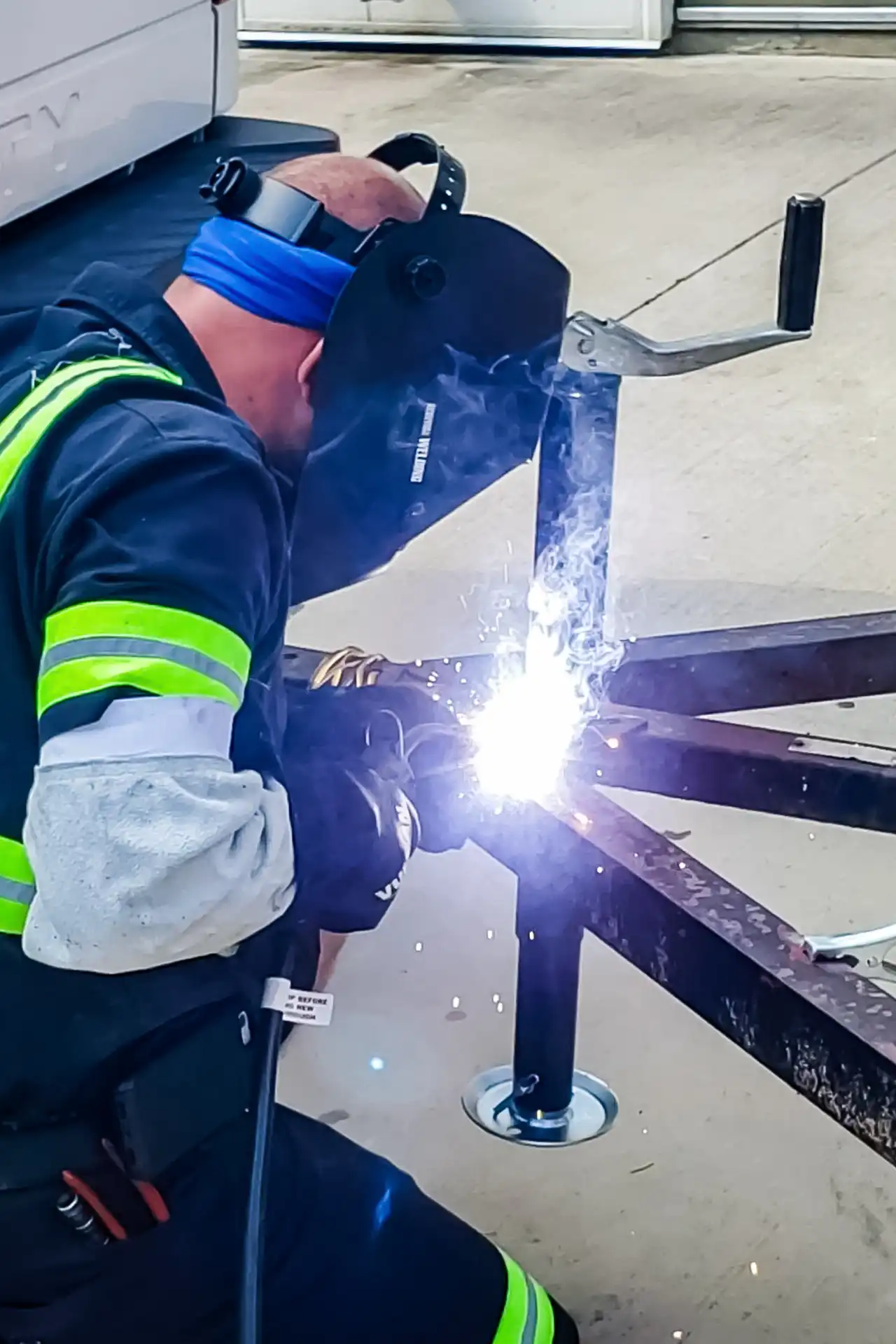Coach bus transmissions face stress from high weights, idling, urban pickups, and highway driving. Regular maintenance ensures high uptime, prevents heat failures, and maintains shift quality. Follow these guidelines for automatic and AMT transmissions in the Evans, GA area.

Coach duty cycles are demanding, with high curb weights, long idling times, urban pickups, and extensive highway driving exerting stress on the transmission. Implementing a regular coach bus transmission maintenance program helps ensure high operational uptime, reduces the risk of heat-related failures, and preserves shift quality. Below are detailed instructions on the necessary maintenance for automatic transmissions and AMT transmissions in coach fleets operating near Evans, GA.
Automatic and AMT Architectures: What Matters For Maintenance
Modern coaches typically employ either a fully automatic transmission or an AMT (Automated Manual Transmission). An automatic uses a hydraulic torque converter to start and perform gear shifts automatically, while an AMT maintains a manual gearbox but automates clutch and gear changes. In both systems, an electronic control unit manages the shifting logic and timing, directly connecting software functionality to driveline performance.
Service planning relies on two main facts. First, the torque converter in an automatic transmission replaces the manual clutch, allowing the vehicle to stop without stalling. However, it generates heat during launches and slip events. Second, the ECU/TCM controls gear selection in both automatics and AMTs, so software calibration and fault-free sensors are crucial for ensuring reliability.
Heat Is The Primary Adversary
Thermal management is key to extending transmission life. The cooler is engineered to remove heat from the fluid by channelling it through finned passages that are exposed to airflow. This effectively prevents overheating, which is a common reason for transmission failure during heavy loads or in high-temperature environments.
Cooling functions as a system, not merely a component. The radiator and fan clutch manage airflow through the front stack. When driving at low speeds, the fan clutch activates to compensate for reduced airflow, helping cool the engine and all auxiliary heat exchangers behind the grille, including the transmission cooler. In reality, many roadside failures originate from thermal problems. Overheating is among the leading causes of breakdowns, affecting not only the engine but also the transmission in such cases.
Fluids, Pressures, & Why Analysis Matters
Transmission fluid has three primary roles: lubricating components, cooling the system, and, in automatic and semi-automatic transmissions, transmitting hydraulic pressure to control clutches and valves. As a result, the fluid's condition directly impacts shift smoothness, clutch lifespan, and heat management.
Include transmission fluid analysis in the preventive maintenance (PM) schedule. Laboratory tests help identify oxidation, viscosity variations, and wear metals, allowing early detection of converter problems or valve body wear. Usually, check the hot-idle level on flat ground, observe the colour (bright red versus darker or burnt), and modify change intervals according to the duty cycle, ambient temperature, and stop-start conditions.
Software, Sensors, & Controls
Since the ECU/TCM controls shift execution in both automatics and AMTs, it is crucial to maintain software integrity at all times. Regularly check the current calibration, scan for fault codes, and perform TCM diagnostics that test solenoids, as well as clutch and shift actuators in AMTs. These actions help prevent hunting on rolling hills and extend clutch life by keeping shift calibration and learned values aligned with actual loads.
Cooling Stack Hygiene: Weekly & Seasonal Tasks
During Evans’s warm and humid summers, pollen and debris tend to quickly gather on the condenser, charge-air radiator, and transmission cooler stack. Regularly clean the grille and stack faces using low-pressure water, inspect for bent fins, and verify that the fan clutch engages correctly. Consider these steps as part of routine preventive maintenance rather than an emergency. The primary objective is to maintain high airflow at low vehicle speeds, which enables the transmission cooler to dissipate heat effectively.
A Disciplined Maintenance Program For Coaches
Following a structured PM schedule is the most reliable method to lower failures and expenses. Preventive maintenance emphasizes identifying and addressing problems early, which is particularly crucial for heavy vehicles operating in demanding environments, such as coach fleets.
Use these elements to create a localized plan:
- Fluid management: Shorten fluid and filter intervals for city and school-route coaches that often idle and experience long launch events. This helps protect clutches and reduces heat buildup in both automatics and AMTs by keeping fluid chemistry within specifications.
- Cooler circuit integrity: Inspect cooler lines and fittings for leaks, ensure passages are clear, and verify the temperature drop across the cooler under load. Clean the forward stack regularly; the fan clutch restores low-speed airflow when needed.
- Electronics and calibration: Include scheduled TCM diagnostics and shift calibration checks to ensure that electronic control remains synchronized with actual vehicle loading and tire sizes.
- Thermal audits: At the start of the warm season, perform a targeted thermal inspection, focusing on fan-clutch operation, shroud integrity, radiator fin condition, and cooler flow. This helps prevent the most common roadside failure—overheating.
- Recordkeeping and trend analysis: Monitor sump temperature, converter outlet temperature (when available), line pressure, and sample results from transmission fluid analysis. Tracking this data helps optimize maintenance intervals and allows early detection of internal wear.
AMT-Specific Focus Areas
AMTs depend on reliable actuation and clean signals. Inspect and clean transmission harness connectors, verify grounds, and protect loom routing from wear. Calibrate the clutch actuator after any service that affects the bellhousing or flywheel. Check the accuracy of the neutral and gear-position sensors. These steps help prevent missed shifts, clutch drag, and false-neutral events that can stress the driveline. Include these checks in comprehensive AMT transmission maintenance so that both electronic and mechanical systems are tested during the same service visit.
If the coach has a driveline or hydraulic retarder, consider the extra heat it can produce during long descents. Adjust service intervals and cooling inspections as needed to keep the transmission cooler working effectively in mountainous charter work.
Automatic-Specific Checkpoints: Torque Converter & Lock-Up
On fully automatic transmissions, the torque converter clutch (TCC) plays a vital role in improving fuel efficiency and managing heat. When cruising steadily, the TCC should lock smoothly; if it shudders or cycles intermittently, it suggests fluid issues, control problems, or early wear of the converter. Recognizing the converter’s function—acting as a clutch replacement that allows the vehicle to stop without stalling—helps technicians diagnose symptoms and determine the appropriate service actions.
Field-test procedure (brief and repeatable):
- Launch quality: Start from a stop, assess flare or hesitation in first and second gears. Abnormalities often indicate issues with hydraulic pressure or temperature—serving as an early sign to collect a sample for transmission fluid analysis.
- Lock-up verification: At 35–45 mph, press and release the light throttle. Expect a smooth lock/unlock without vibration. Any anomalies should lead to an inspection of the TCC control and fluid condition.
- Thermal watch: After extended idling, monitor the temperature trend. Rapid increases indicate poor airflow or cooler restriction; check fan-clutch engagement and inspect the stack face for debris.
On-Route Checks For Drivers & Dispatch
Technicians can't be at every seat. Provide drivers with a clear checklist that supports maintenance goals.
- Pre-trip: Inspect for leaks around the pan, lines, and cooler fittings; record any transmission warnings at key-on.
- En route: Monitor for hunting on grades (AMT) and repeated unlock events (automatic). Escalate quickly; unresolved hunting increases heat and clutch wear.
- Post-trip: Idle briefly after steep grades to stabilize temperatures before shutdown and document any shift irregularities for the shop to address at the next TCM diagnostics session.
Dispatchers can improve compliance by scheduling coaches that have recently undergone cooling-stack service on the most congestion-prone routes during extreme heat advisories, while maintaining some margin for vehicles that are waiting to be cleaned.
Why This Discipline Pays Off
Effective preventive maintenance minimizes expensive thermal failures, prolongs the lifespan of clutches and friction parts, and ensures passenger comfort through smooth, consistent shifting. In areas like Evans, GA, where summer humidity, pollen, and heat impair airflow, keeping the cooling stack clean and fluid in good condition offers notable advantages for durability and operational stability. A data-driven strategy that combines visual inspections, TCM diagnostics, shift calibration, and transmission fluid testing is the most reliable way to achieve "shift smooth, run long.”
For a route-specific automatic transmission service and AMT transmission maintenance plan for your coaches, contact Langford Tire Service in Evans, GA, to get a baseline assessment and a calibrated preventive maintenance schedule.
News & Articles
Read About The Latest in Industry
Here, you'll find regular articles covering a wide range of topics related to diesel repair, maintenance, and troubleshooting.
Don't Take our word for it.
Read Customer Testimonials.
Contact Us
Let us know what is going on with your vehicle, and we will get back to you soon with a quote.





